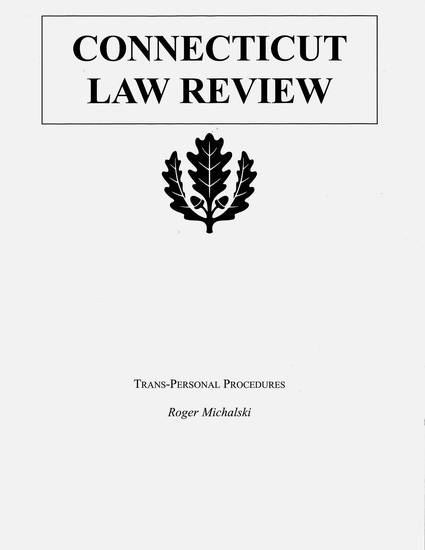
Article
Trans-Personal Procedures
Connecticut Law Review
(2014)
Abstract
Recent court decisions have reignited a national debate about corporate personhood. This debate recognizes that the legal status of artificial persons is of great importance to the fabric of society, law, and
politics. Questions about the status of artificial persons are typically raised in the context of substantive law, where corporate personhood has triggered strong reactions and important scholarship. But there is another,
completely neglected side to this debate. The status of artificial entities is not solely negotiated in the context of substantive law. Procedure, similarly, must also choose whether to treat natural and artificial entities
alike or not.
This Article is the first to examine when, how, and why procedure differentiates between different types of entities (natural persons, corporations, government agencies, labor unions, Native American Tribes, etc.). The default is trans-personal procedures that do not vary based on the personhood or entity-type of the litigating parties, yet deviations from the trans-personal norm span the procedural spectrum and systematically
advantage and disadvantage some entities over others. I argue that the problem is not the trans-personal norm, or the many exceptions to it, but ad hoc departuresf rom the norm, or blind adherence to the norm. Both are
problematic and under-theorized. This Article demonstrates how different procedural values can be furthered or stifled by trans-personal rules and deviations from such rules. Before committing to trans-personal procedures or entity-specific treatment, we must understand how procedural values are affected by trans-personality. Procedural design neglects trans-personality at its own peril.
Keywords
- corporate personhood,
- natural entities,
- artificial entities,
- trans-personal rules,
- procedure
Disciplines
Publication Date
December, 2014
Citation Information
Roger Michalski, Trans-Personal Procedures, 47 Conn. L. Rev. 321 (2014).
